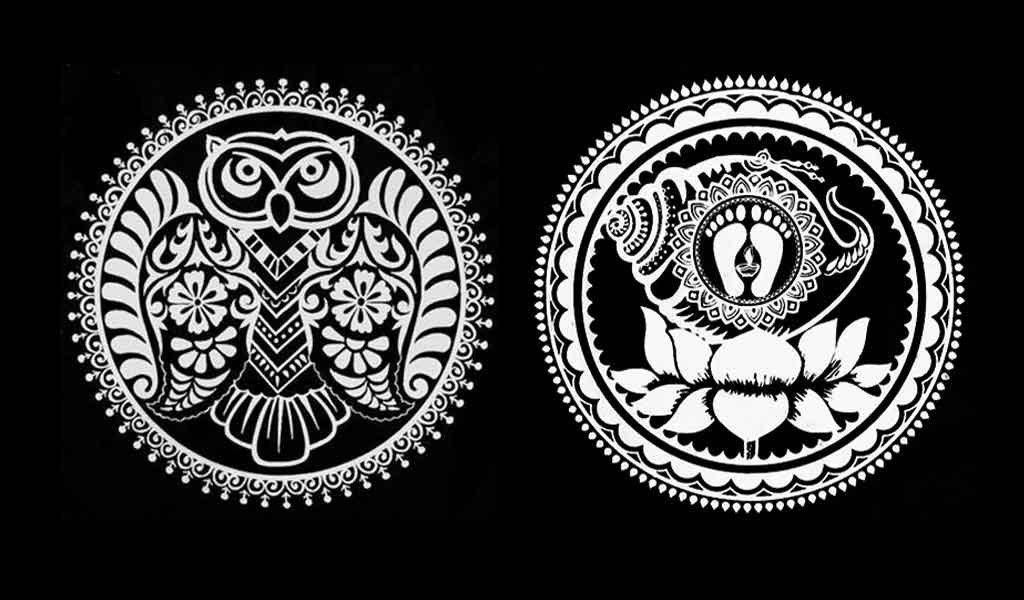How did the Folk Art of Alpona come to Bengal?
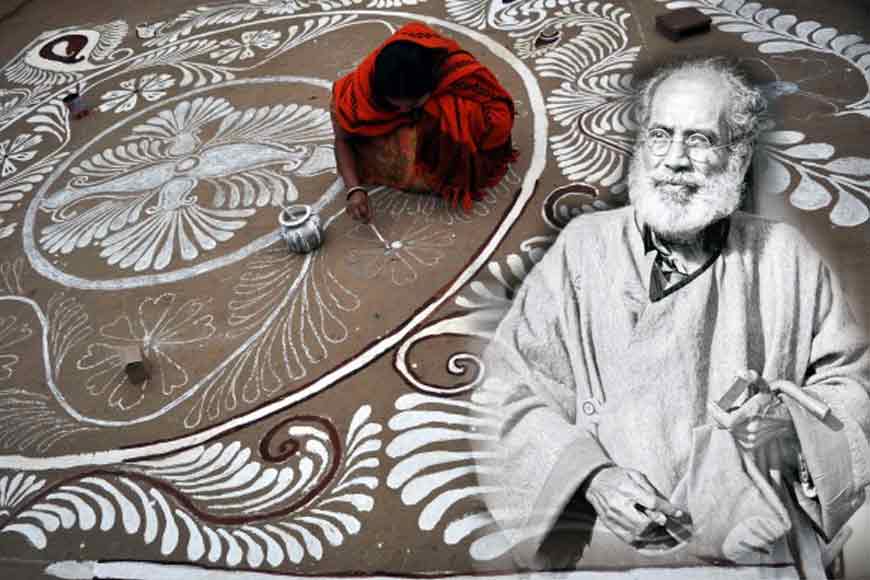
This Lakshmi Puja, most Bengali homes will find artistic motifs of Alpona drawn across floors. Motifs of sun, lotus, fish, swastika, owl, snake, footprints of goddess Lakshmi, or even abstract designs will welcome the Goddess of Wealth to their homes. An ancient tradition, this laborious ritual of finger-painting in Bengal is called ‘Alpona’ and has roots in Sanskrit word ‘alimpan’, which means ‘to coat’ or ‘plaster’. Some believe introduction of Alpona in Bengal can be non-Aryan in origin, derived from ‘ailpona’- the art of making ‘ails’ or embankment, believed to keep homes, neighbourhoods or villages safe and prosperous.
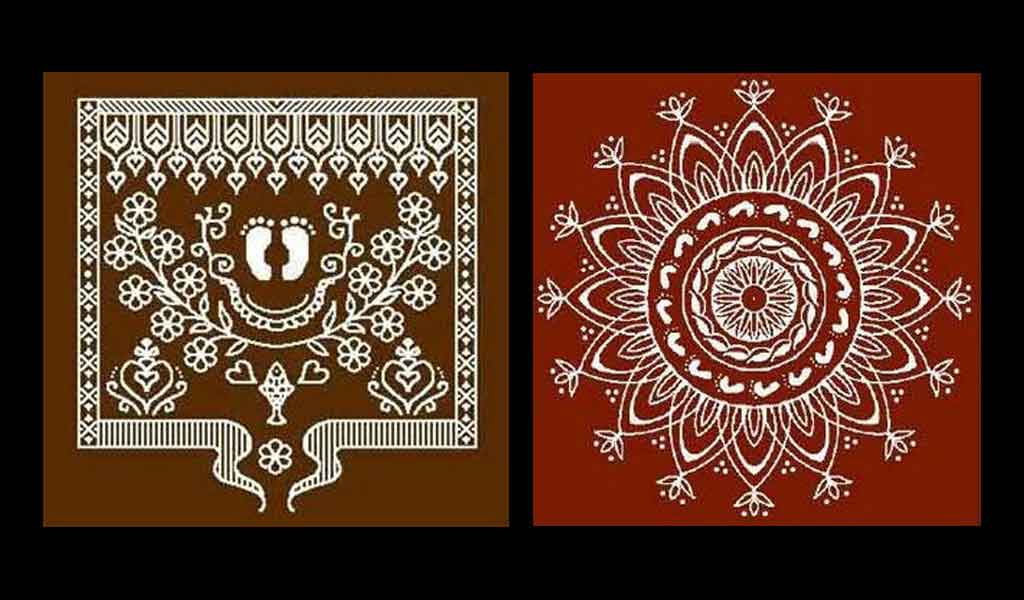
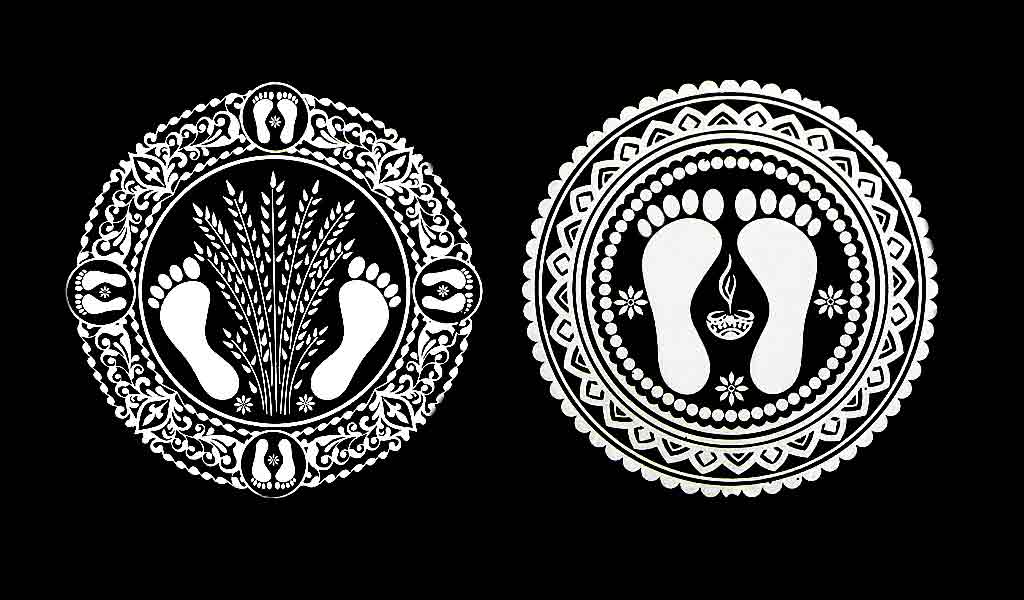
The designs of alpona have a magical power and are used as welcome signs of wealth and prosperity at the entrance of the house every Lakshmi Puja. Alpona is a liquid paste made of the slurry of atop chaal (refined rice) and was originally drawn on a base of clay mixed with cow dung. Although, predominantly it is white in colour, artists can add hues to the design using turmeric paste for yellow and red clay with vermillion paste for crimson.
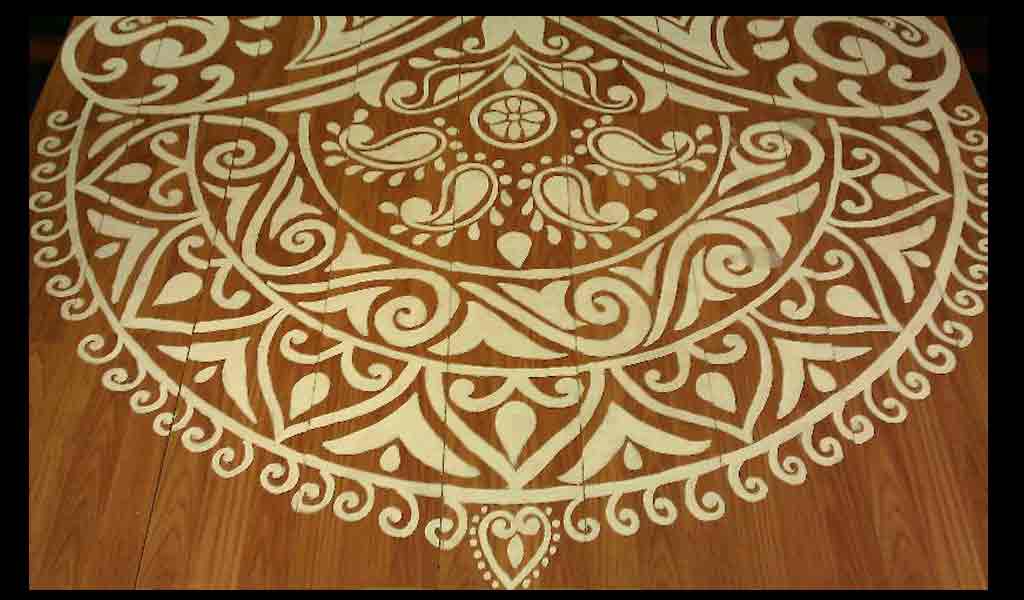
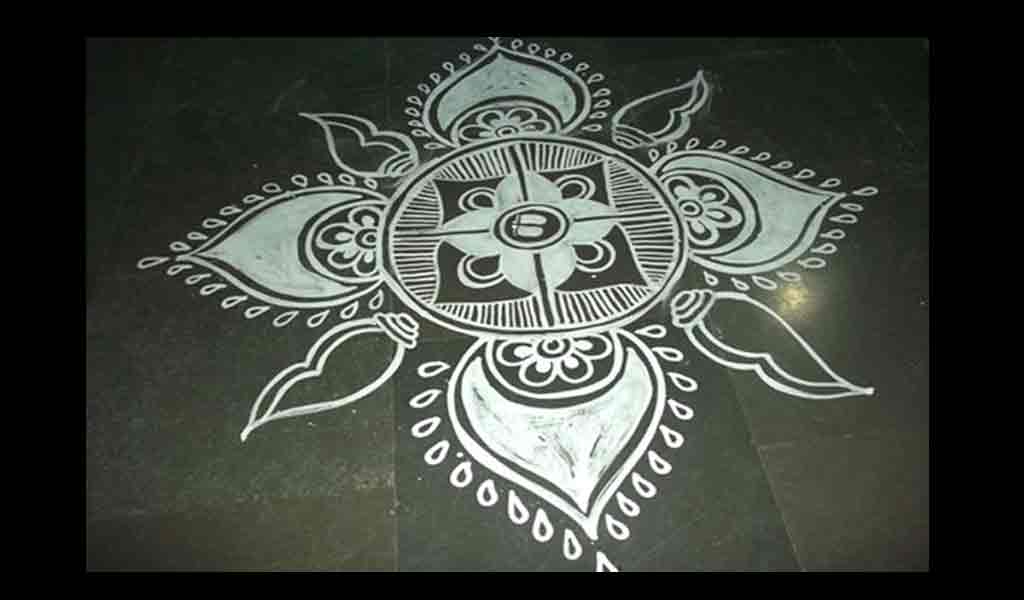
Alpona painting also has an ecological importance, The rice flour used served as bhutayajna, an offering to tiny creatures like ants and other insects. Further, rice powder is a cleansing element which is traditionally attributed to preventing chicken pox during the summer and is hence applied on the faces of children in several parts of India as a preventive measure.
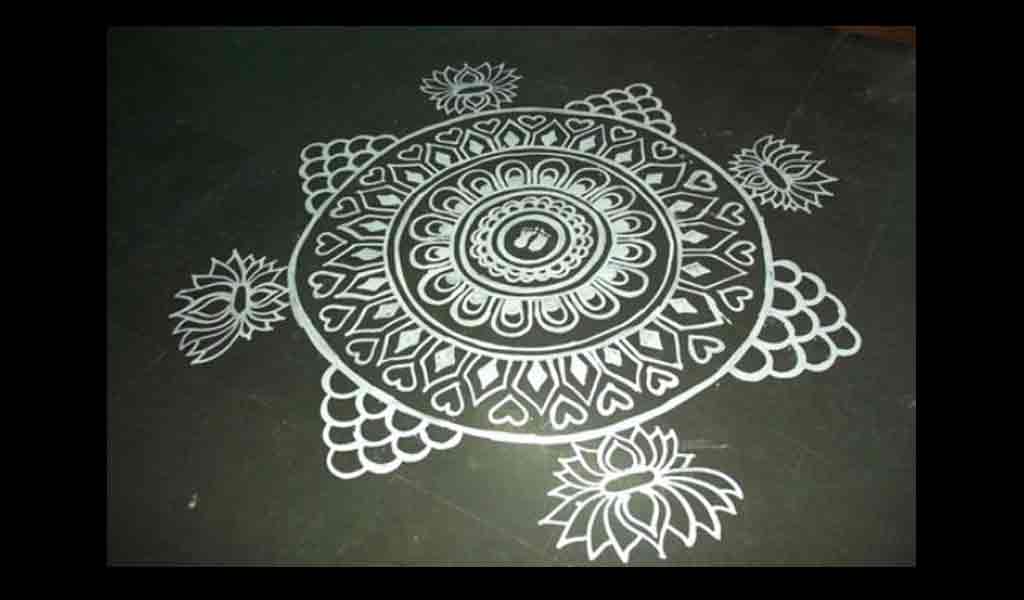
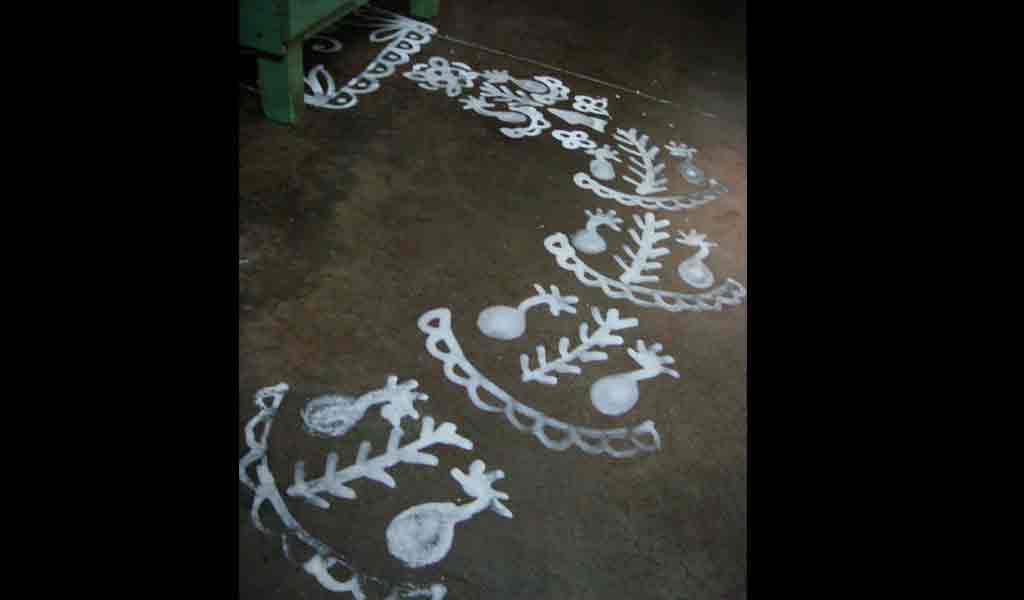
Alpona is also a folk art of Bengal that was endorsed by none other than Abanindranath Tagore. Not just Lakshmi Puja, alponas are also associated with vrat (fasting) and a symbol of expression of women. For generations, Alpona has continued to tie together the social fabric of Bengal and still continues to do so in an age of plastic rangolis.
